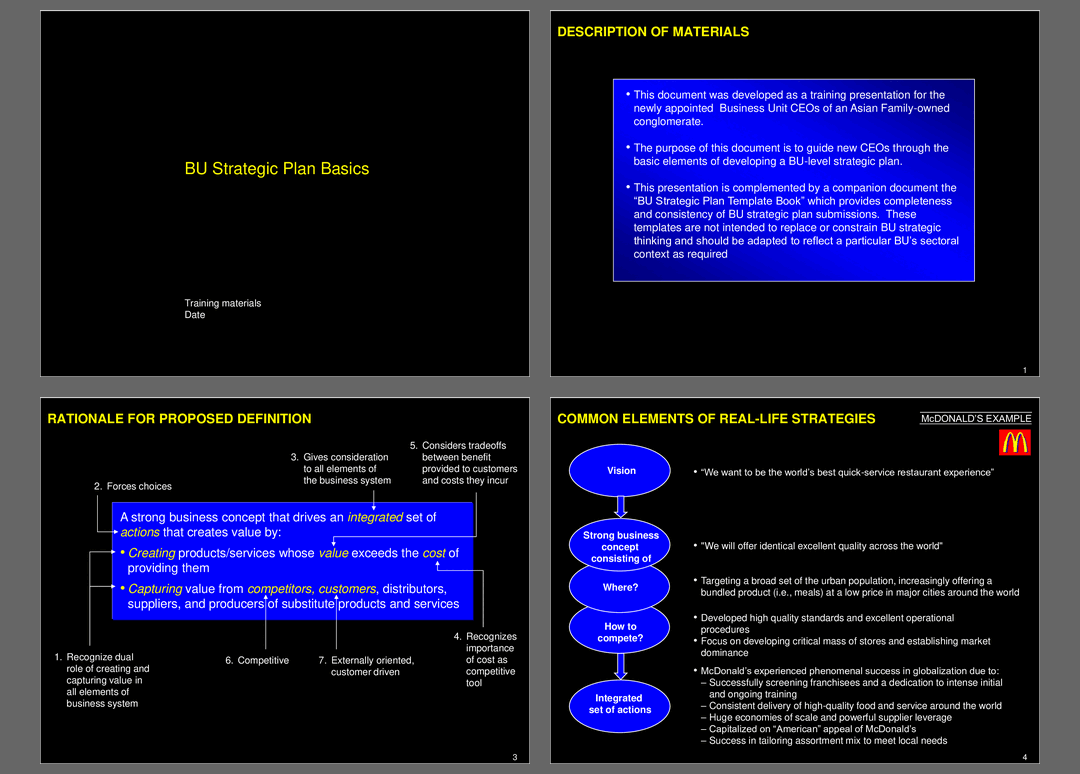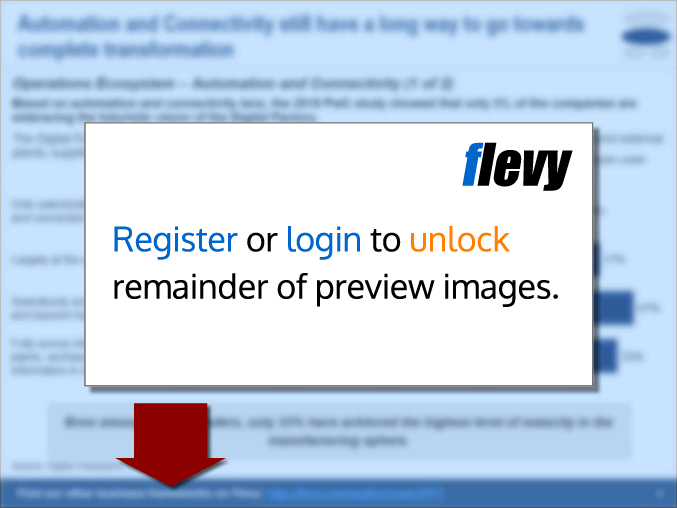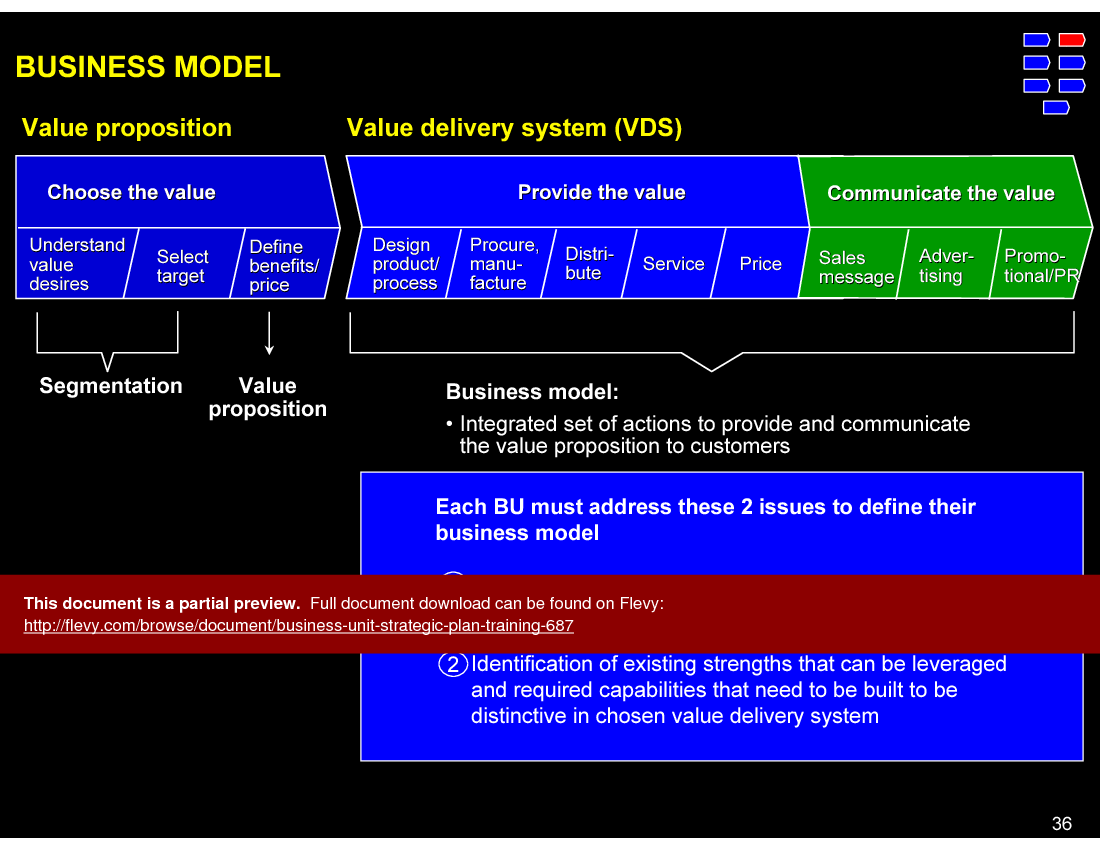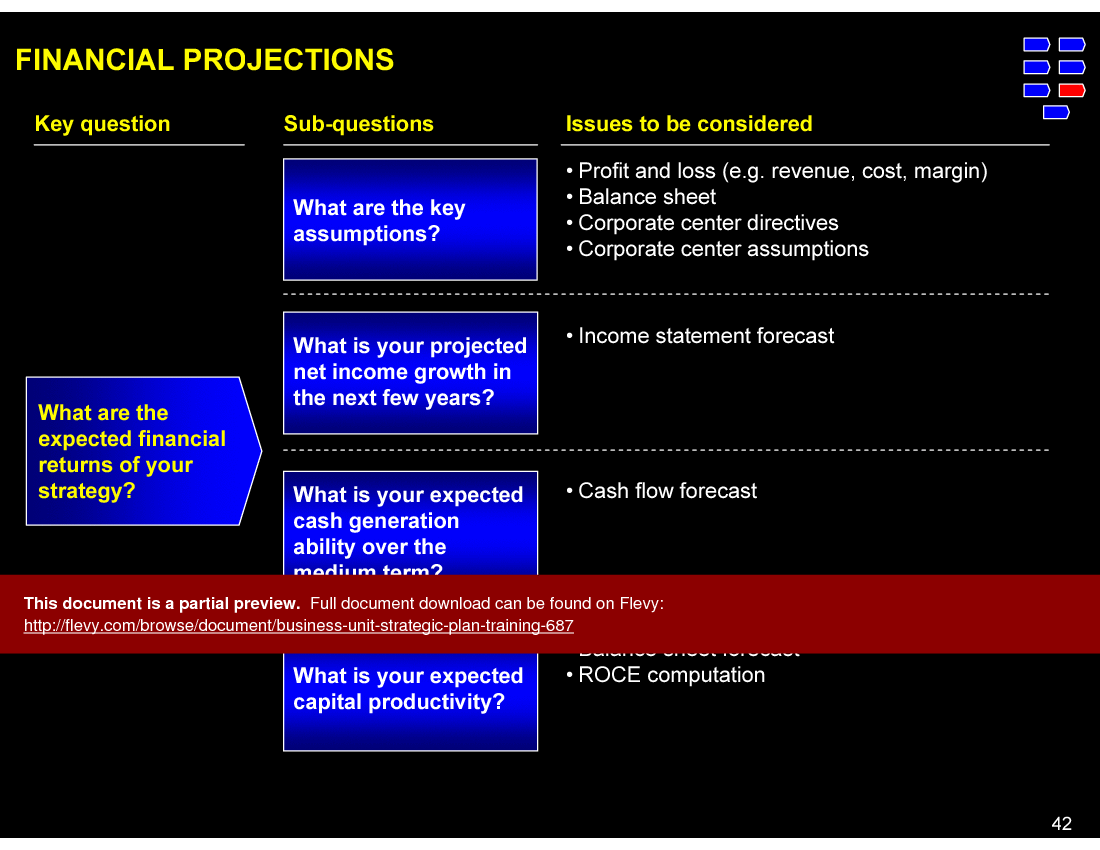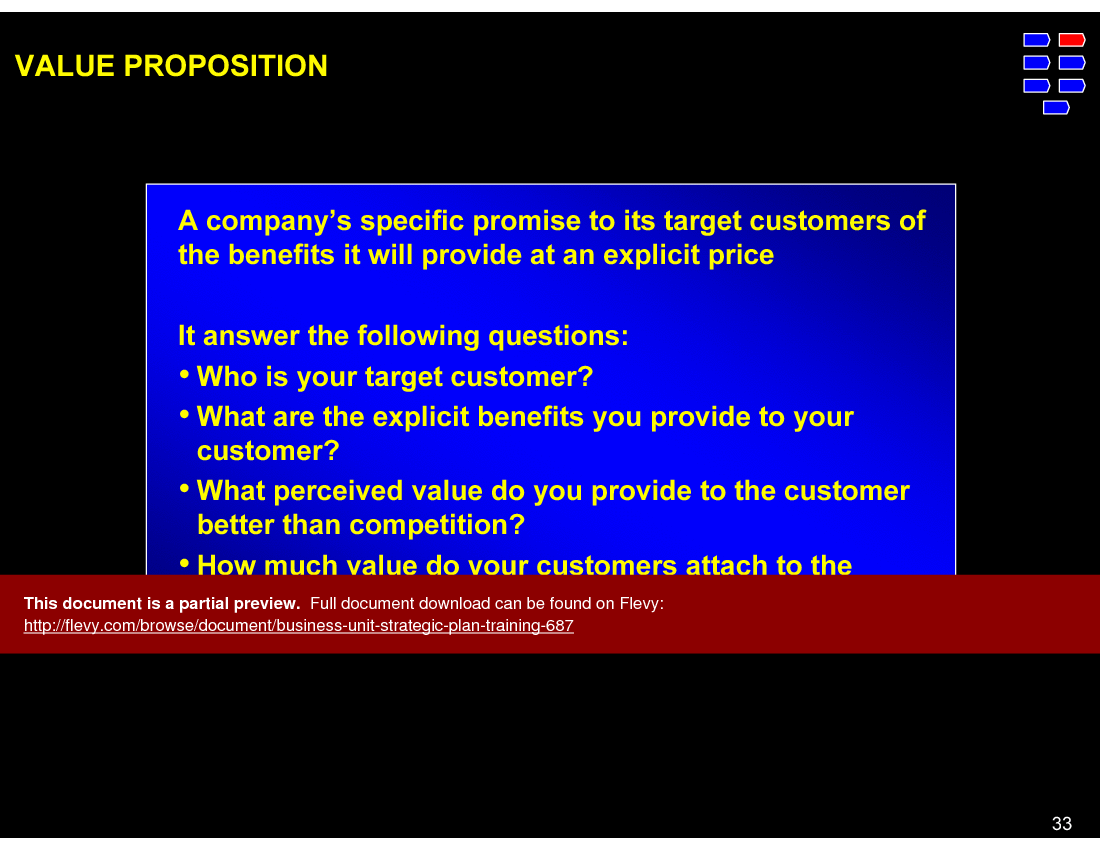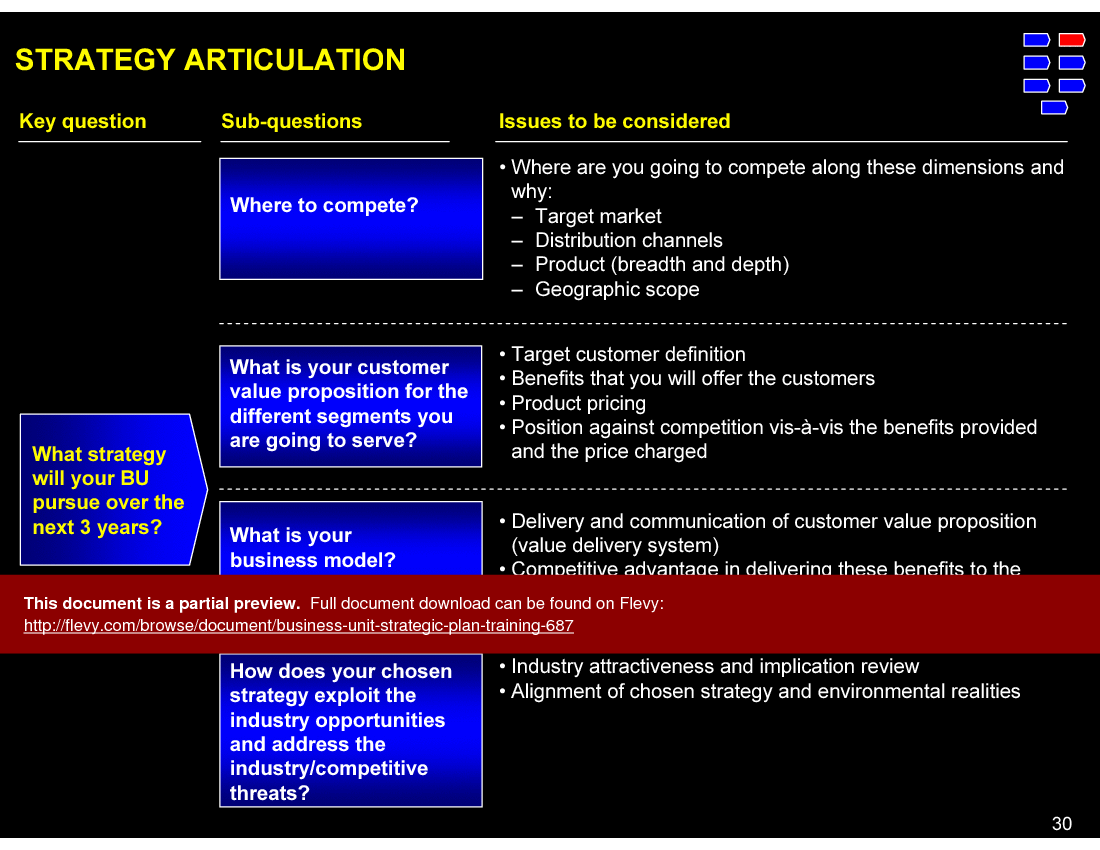Business Unit Strategic Plan Training (PowerPoint PPT Slide Deck)
PowerPoint (PPT) 50 Slides
STRATEGIC PLAN EXAMPLE PPT DESCRIPTION
This document was developed as a training presentation for the newly appointed Business Unit CEOs of an Asian Family-owned conglomerate.
The purpose of this document is to guide new CEOs through the basic elements of developing a BU-level strategic plan.
This presentation is complemented by a companion document the "Business Unit Strategic Plan Template Book," which provides completeness and consistency of BU strategic plan submissions. These templates are not intended to replace or constrain BU strategic thinking and should be adapted to reflect a particular BU's sectoral context as required
This training presentation dives deep into the essential components of a Business Unit (BU) strategic plan, ensuring that new CEOs are well-equipped to make informed decisions. It emphasizes the importance of creating products and services whose value surpasses the cost of production, and capturing value from various stakeholders including competitors and customers. The document provides a comprehensive framework for assessing industry dynamics, competitive strengths and weaknesses, and internal capabilities, all crucial for strategic planning.
The presentation also covers the Structure-Conduct-Performance (SCP) model, highlighting how external shocks, market structure, and firm conduct impact performance. It offers a detailed analysis of how these factors apply to specific companies, providing practical insights that can be adapted to different business contexts. This model serves as a valuable tool for understanding the broader market environment and making strategic adjustments accordingly.
Additionally, the document includes a thorough examination of capability platforms, identifying sources of competitive advantage such as privileged assets and distinctive capabilities. It provides examples of how these capabilities have been leveraged by leading companies, offering actionable insights for new CEOs. The presentation also addresses financial projections and strategic initiatives, ensuring that all aspects of the BU strategic plan are covered comprehensively.
Got a question about the product? Email us at support@flevy.com or ask the author directly by using the "Ask the Author a Question" form. If you cannot view the preview above this document description, go here to view the large preview instead.
Source: Best Practices in Strategic Plan Example, Business Unit Strategy PowerPoint Slides: Business Unit Strategic Plan Training PowerPoint (PPT) Presentation Slide Deck, Documents & Files
STRATEGIC PLAN EXAMPLE PPT SLIDES
